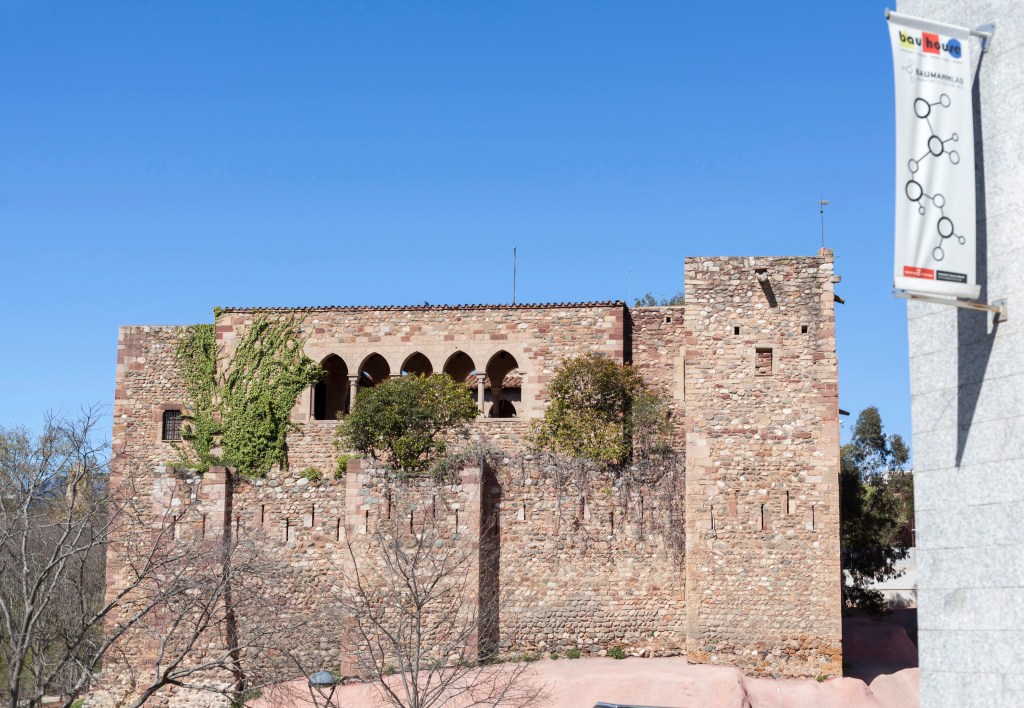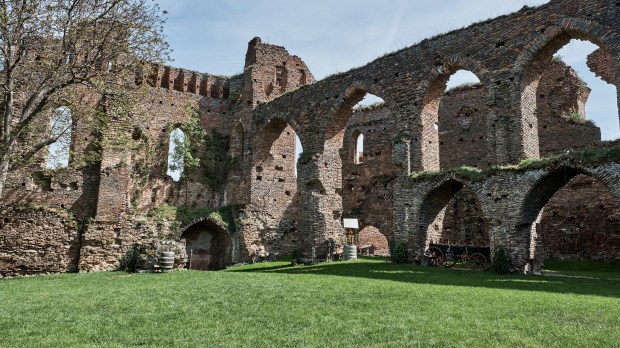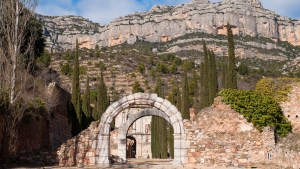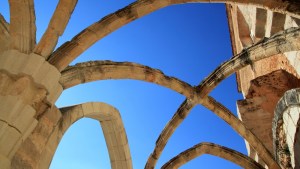The Carthusian castle of Vallparadís (officially called the Castell Cartoixa de Vallparadís, in Catalan) is an ancient building located in the Catalan town of Tarrasa, near the stream and natural park of Vallparadís – a 30-minute drive from Barcelona. It is exactly what it sounds like: It is both a castle and a Carthusian monastery.
The Carthusian order was founded in the late 11th century in the French Prealps by Bruno de Cologne. By the end of the next century, as northern Spain was being reconquered and the territory needed to be repopulated, Carthusians arrived in the Peninsula for the very first time. Their first monastery was the imposing Cartoixa D’Escaladei, the Carthusian Monastery of St. Mary of Escaladei – Escaladeibeing a phonetic corruption of the original Latin Scala Dei, “the ladder of God,” or even “the ladder unto God.”
The first mention of a castle near the Vallparadís stream is found in a document from the early 12th century (circa 1110), when a noble couple (Berenguer de Sanlà and his wife Ermessendis) bought some land from the Count of Barcelona, Ramon Berenguer III, to build their residence. The castle of Vallparadís belonged to this family (who adopted the surname of Tarrasa) for at least two centuries, until 1344. That year, the castle was given to a community of Carthusian monks from the great monastery of St. Mary of Escaladei.

In order to turn the castle into a proper monastery, the monks had to make important reforms to the building: the creation of the cloister in the old parade ground, the chapter house and, naturally, the chapel.
As in every other monastery, the Carthusian way of life at the Cartuja de Vallparadis revolved around silence, solitude, and manual labor. Each monk pursued a life of self-sufficiency, engaging in tasks such as manuscript illumination, herbal medicine preparation, and manual labor to sustain the monastery. This unique blend of spiritual devotion and self-sufficiency allowed the Carthusians to create a self-contained spiritual haven. But it was not going to be their residence for long.
The Carthusian monastery of San James de Vallparadís (that was its name for around a century) survived until 1413 – the year the original Carthusian community moved to Tiana, to their new, imposing monastery of Montalegre. That same year, the castle was handed over to the Carmelites of the Hospital de la Santa Cruz in Barcelona. Eventually, the old castle was converted into a farmhouse, and ended up being ceded to the city council in the mid-20th century, when it went through an intense campaign of restoration and reconstruction. Since 1959, the building is part of the Tarrasa Museum.
Despite all these transformations, its enduring significance as a spiritual and cultural center remains intact. Visitors to this monastery-castle-museum are offered a glimpse into the lives of the monks who once inhabited its hallowed halls – a testament to the enduring power of faith and labor.



